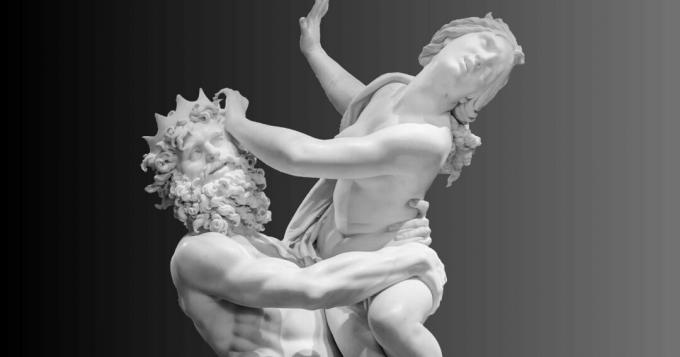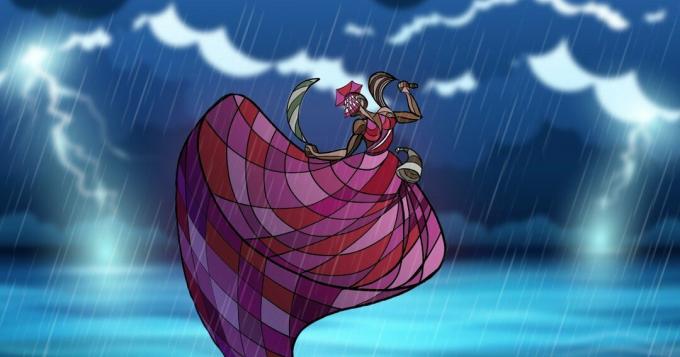Hades is the god of underworld and of dead. One of the main deities of greek pantheon, played an important role in ancient Greek mythology and beliefs.
Son of Kronos It is RheaHades is the brother of Zeus It is Poseidon. After Titanomachy, the war between the Titans and the Olympian gods, the three brothers divided the world into three parts. Zeus became ruler of the heavens and the gods, Poseidon became lord of the seas, and Hades was given dominion of the underworld.
The underworld ruled by Hades was a dark place inaccessible to the living. It was divided into several regions, including the Tartarus, where the worst criminals and defeated Titans were imprisoned. Hades also ruled over the Elysian fields, a resting place for virtuous souls, and the Asphodel Fields, where ordinary souls resided.

Hades was often portrayed as a stern and impassive god. Despite its gloomy image, was not considered malevolent. The god simply played out his role as ruler of the underworld and executor of divine justice. It was up to him to decide the fate of souls and he judged them according to their actions in life.
It's common confuse him as the god of death. However, the god who personifies death is thanatos. Hades, as already pointed out, is the lord of the dead and the underworld.
stories and myths
In Greek mythology, Hades had few episodes of direct interaction with the other gods or humans. However, he played an important role in some stories Let's see below the main narratives involving the god of the underworld:
Persephone's Abduction

One of the most famous stories involving Hades is the abduction of persephone (Proserpine, to the Romans), daughter of Demeter, goddess of agriculture. The god fell in love with the goddess of spring, taking her to the underworld while she picked flowers in a field.
Demeter was devastated by her daughter's disappearance. Your sadness has made the land barren. Zeus, to prevent chaos from ensuing, interfered. The goddess would then spend half the year with the god of the dead and the other with her mother on the surface.
The story explains the cycle of seasons, with spring and summer representing the period when mother and daughter are reunited, while autumn and winter represent the time when Persephone is in the underworld with Hades.
To the daughters of Hades and Persephone are the furies (also called erinea), goddesses of revenge, and Macaria, goddess of good death. It is customary to mistakenly attribute the paternity of Hades to Melinoe and Zagreus. However, these are children of the goddess with Zeus.
Orpheus and Eurydice
Orpheus, a talented musician and poet, fell in love with Eurydice and they got married. However, Eurydice dies after being bitten by a venomous snake. The poet, devastated by the loss, decides to descend into the underworld to rescue his beloved.
With his music, he charms Hades and Persephone, convincing them to allow Eurydice to return to life. The gods agreed to return his beloved, but on one condition: Orpheus must walk ahead of her without looking back until both reach the world of the living. Unfortunately, at the last moment, Orpheus gives in to temptation and looks back, and Eurydice is dragged back to the netherworld.
Sisyphus and his punishment
Hades is also known for imposing punishments in the underworld. One of the best known stories is that of Sisyphus. This is a cunning and deceitful king condemned by Hades to roll a stone up a mountain, only to have it roll back over and over again, as an eternal punishment for his actions.
Symbols and Powers of Hades

- Cerberus: the deity had a three headed dog called Cerberus, who guarded the entrance to the underworld. This monstrous dog was ferocious and prevented souls from escaping or the living from entering the realm of the dead.
- Control over the Underworld: As the god of the underworld, Hades had absolute control over the various regions of that dimension.
- Judgment of Souls: Hades judged the souls of the dead and decided their fate after death. It therefore determined whether souls would be sent to Tartarus, the Asphodel Fields or the Elysian Fields, depending on their actions in life.
- cypress wreath: the god was often portrayed wearing a wreath of cypress, a tree associated with death and the underworld.
- Helm of Invisibility: Hades had a special helmet that made him invisible to the eyes of gods and mortals alike. This helmet allowed him to move freely in the world of the living and in the celestial realms without being noticed.
- Scepter: the god of the underworld was often depicted holding a scepter, a staff that symbolized his power and authority.
Bibliography:
BULFLINCH, Thomas. The Golden Book of Mythology. Rio de Janeiro: Ediouro, 2006.
JAEGER, Werner. Paideia: the formation of the Greek man. São Paulo: Martins Fontes, 2013.
See too:
- Mythology
- Greek mythology
- Greek gods
- Norse mythology
- indian gods


